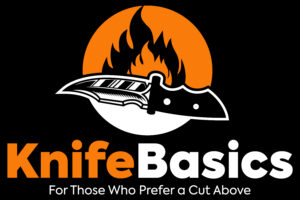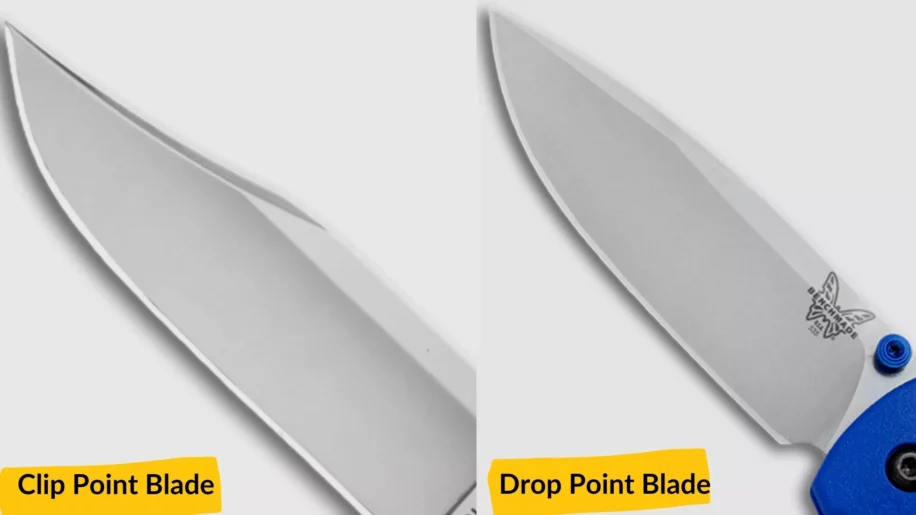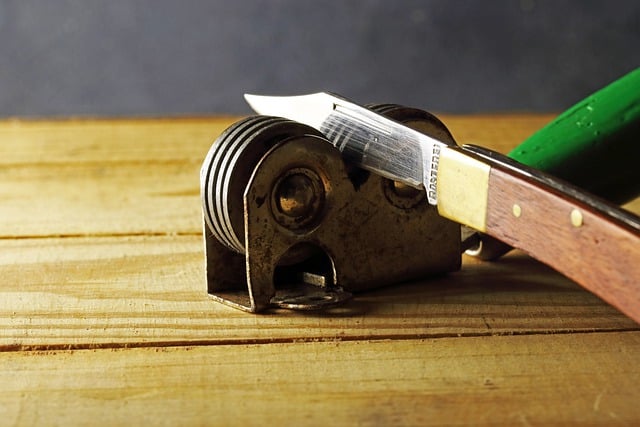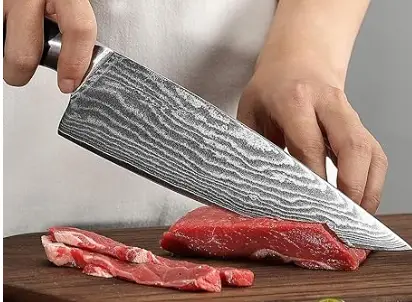Before stepping out to buy that next pocket knife or fixed blade knife, you need to be aware there are different types of blades including clip point, drop point, tanto, trailing point, and so on.
Some blades are made for hunting, skinning, or fishing purposes. Other blade designs fit kitchen utility with many household roles. In particular, our focus is on the clip point blade style that has been a popular choice for every possible need.
What Is a Clip Point Blade Style?
The clip point or cut-out area is often concave, although some design retains a straight upper edge. Either way, the clip point still achieves a fine point edge ideal for precision cutting, slicing, or stabbing.
Clip Point Knife Uses
Game Meat Processing
The clip point knife is a classic hunting knife whose origin use focuses on game meat dressing plus skinning at the scene. Hunters would go for the clip point style due to its design creating a sharp endpoint capable of piercing through hides and slices through the game meet.
Kitchen Utility knife
While the clip point knife originated outdoors, it quickly made its way into our kitchen as a utility knife with a wide range of practicality. IN general, the clip point knife is helpful in everyday kitchen tasks involving meat processing where skinning and slicing are necessary.
Personal Protection
Despite being often overlooked, a clip point blade is a practical self-protection knife that can come in handy in sticky situations. For example, a wide variety of pocket knives and fixed blade knives have a clip-point blade style. That is not a coincidence, as a clip-point blade design has a sharp point at the end and can prove effective in stabbing.
Camp related tasks
Since it’s a practical hunting knife, you can also count on a clip-point knife to more than skin and slice meat. The knife is a great all-around blade that features in any camper’s collection for several reasons.
First, a clip point blade style can come in handy when considering cutting twigs, cords, and ropes. The role is aside from its usefulness in cooking activities when having your outdoor adventure.
Clip Point Pros and Cons
Unfortunately, due to each blade’s specific design, you can count on each knife to have its list of advantages and disadvantages. Let’s find out what they are.
Pros of a Clip Point Blade
Great piercing capability
As the name suggests, a clip point spine is extra sharp with a slim pointy design at the end. This clipped-off design effectively pierces flesh since it runs through hide, skin, and meat.
Versatility
If you are looking for a versatile knife, few come close to the clip-point blade style. As you already know, it is a great all-purpose blade style that proves effective in hunting, personal protection to even general kitchen tasks.
Sharp blade design
When considering the design, there is little you can go wrong with a clip-point blade style. The slim and sharp point style makes it an all-around practical knife for comprehensive cutting, skinning, and piercing tasks.
Cons of a Clip Point Blade
Not great for skinning
While a clip point blade style is a great pick for skinning, it is not always the ideal option in all circumstances. First, the blade design and extra sharpness easily pierce through skin or flesh, undermining the skinning process. For example, with its edge, a clip-point blade would end up piercing through skin or meat, ruining the skinning process.
Possible weak point
Unfortunately, the slim and sharp blade edge presents a significant shortcoming for clip-point knives. Such a thin and delicate edge has a weak point that can easily break if you pierce a hard-enough surface or object.
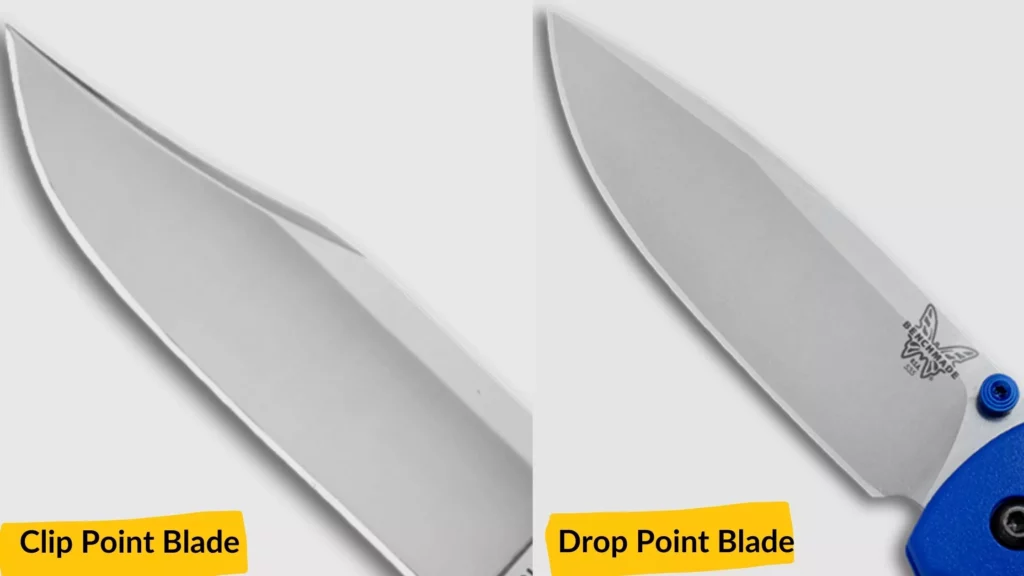
Clip Point vs Drop Point
A great alternative to the clip point blade style is a drop point design. The knife features a similar sharp cutting end with a convex cutting edge for the blade with the drop point style. Since the drop point is similar to its clip point counterpart, here’s how these two blade styles differ.
Blade shape
A clip point knife has a sharp point with a classic clipped(concave) upper front section of the blade. On the flip side, the drop point blade has an opposite(concave) upper blade section with an equally sharp cutting edge.
Usability
The clip point hands down beat the drop point blade style when you consider usability. To an extent, a clip point blade is a general-purpose type of knife with all kinds of uses, from skinning to self-defense. However, the drop point is specifically made as a hunting knife to skinning and game meat dressing.
Strength
Both blade styles prove effective with excellent accuracy in skinning and cutting meat. But, the precision level varies since each blade style has a specific purpose. For instance, the clip point design makes it suitable for piercing(better piercing strength) more than the drop point.

Clip Point vs Tanto
The Tanto blade style borrows its inspiration from short swords, emphasizing a tough piercing knife. When weighing between the clip point and tanto, consider what to consider.
Blade shape
From the outlook, the Tanto point blade style has a prominent triangular design where the upper blade edge meets the sharpened end. The clip point is different, with a spine edge coming off with a clipped-off front section.
Usability
The clip point blade style is an all-around purpose knife for different tasks such as meat processing, fish cleaning, and even animal skinning. For the Tanto point blade style, the roles are pretty specific, with the knife only used in specific situations such as cutting or piercing hard materials.
Strength
The Tanto blade style takes the top spot for its high strength hat allows for the blade to pierce through the toughest of objects. This is thanks to its strong angular edge missing in a clip point, making it weak.

Clip Point vs Spear Point
A spear point blade style is another great alternative but with subtle differences in design and purpose. These differences include
Blade shape
The spear point comes with a sharp and symmetrical shape, with the point aligning with the blade’s center. However, a clip point has a standard blade edge, although the spine features a clipped-off upper front section.
Usability
The dagger-like design of the spear point blade makes it handy in slicing, cutting, or piercing through the meat. Opting for the clip point blade style also offers a knife for your meat processing but with extra capabilities such as precision work, deboning, or fish descaling.
Strength
A clip point blade style is quite weak compared to a spear point knife. Please consider that the spear point blade has its point aligned at the blade’s center, which makes up for a strong foundation.
Is Clip Point Good for Self-Defense?
That makes clip point knives effective at stabbing through the skin, flesh, and even rugged clothing such as leather. So next time, make sure your self-defense knife has a clip-point blade style.
You will find a clip point blade style in most knife manufacturers including Spyderco, Kershaw, Coldsteel etc. Your choice should also be based on the type of steel used, as this will directly impact blade performance.
